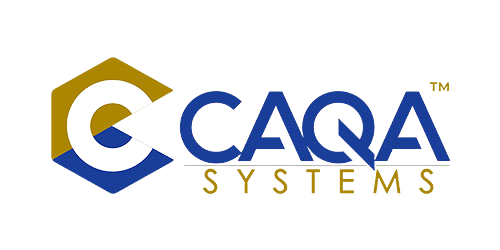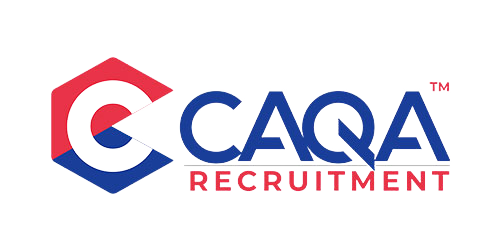The paradox at the heart of Fee-Free TAFE
Australia has poured unprecedented funding into vocational education, positioning Fee-Free TAFE as the flagship solution to the nation’s skills shortages. Yet the most recent data points to a troubling paradox. Despite a large pipeline of publicly funded places, new student commencements have fallen since 2023, while the number of continuing TAFE students has edged up. In other words, much of the policy effort appears to be redistributing who pays for training rather than expanding the pool of new learners entering the system. This pattern raises tough questions about whether current settings are growing the skills pipeline or simply reshuffling it across funding categories. The stakes are national, because every enrolment that does not translate into a new, job-ready graduate leaves employers short and Australians without the skills to secure stable work. The outcome we should want is lasting growth in new entrants and completions aligned to real jobs, not just impressive headlines about how many places are “free” to students. The distinction is critical if we want vocational education to carry its weight in a tight labour market.
What the latest numbers are really saying
Behind the headlines sits a sobering trend. Analysis of the most recent NCVER dataset for 2024 shows that new student enrolments are down by 10.6 per cent compared with 2023, which equates to around 40,375 fewer new students commencing nationally. Within that overall fall, new TAFE commencements are down by 12.3 per cent, while the number of continuing TAFE students has risen by 3.3 per cent. Read at face value, this suggests the system is not expanding the pipeline of new learners. Rather, it is moving a larger share of existing, continuing students into subsidised places. These figures align with the broader NCVER release for 2024, which reports an overall decline in government-funded student numbers compared with the 2023 spike, even though levels remain above 2019. That context matters because it indicates the fall in commencements is not a one-off quirk but part of a normalisation after a surge year, with composition effects dominated by continuing enrolments rather than fresh demand. The Government-funded students and courses 2024 media release and dataset set out this trend at the national level.
It is also important to understand what the national data is not. NCVER has underlined that its publications do not separately identify Fee-Free TAFE within the broader government-funded dataset, because fee-free places are not captured as a distinct category in the national standard. That means analysts and policymakers must triangulate fee-free impacts from aggregate series and jurisdictional reporting rather than expecting a neat “fee-free” line in the tables. The explanatory notes and public statements from NCVER make this limitation explicit.
The price tag and the promise
Commonwealth and state governments have committed more than $1.5 billion through the Fee-Free TAFE Skills Agreement to deliver 500,000 fee-free TAFE and VET places between 2023 and 2026, with an additional construction tranche announced for 2025 and 2026. This is a major public investment by any measure, and it reflects a cross-jurisdictional judgment that the cost of removing tuition fees would be outweighed by participation and completion gains in priority fields. The agreement architecture and program snapshot published by the Department of Employment and Workplace Relations outline the funding envelope, tranche targets and running totals of reported enrolments. Whatever one’s view of the policy, the scale is undisputed.
Are we expanding access or re-slicing the pie?
If fee removal were the decisive barrier, we would expect a surge in new starters. Instead, the national pattern shows fewer new entrants alongside a modest lift in continuing TAFE students. Jurisdictional signals point to why. Victoria’s official reporting highlights that eligibility changes allowed people who already hold a VET qualification or degree to take a Free TAFE course, and to stack more than one free course in a pathway. This widened participation among those already engaged or reskilling, which is positive for individual learners, but it does not automatically translate into growth in net new students entering VET for the first time. Victoria’s own release describes rising participation driven by reskilling and by broadened eligibility, helping to explain why continuing student numbers can rise even while new commencements fall nationally.
Why affordability is not the only barrier
Independent research has cautioned that fee removal, while helpful, does not solve the whole access equation. Holmesglen Institute’s analysis of 2023 data notes that VET tuition has long been subsidised, that other costs and practical barriers still matter, and that much of the fee-free effect has been to strengthen TAFE’s market position at the expense of private providers rather than to deliver a step-change in new demand. The same paper underscores a structural point often overlooked in political debate. Removing tuition revenue reduces the system’s private contribution, which was previously around 13 per cent of funding. All else equal, that lowers the number of funded places the system can offer, unless governments permanently offset the gap. In plain terms, a policy that eliminates fees can buy fewer places per dollar than a policy that shares costs between the public and learners, unless additional public money is put in forever. That trade-off sits at the centre of the participation paradox.
What we choose to measure will determine what we deliver
Much of the public communication around Fee-Free TAFE focuses on the volume of fee-free enrolments or the percentage of tranche targets “achieved”. Those are not inherently wrong, but they can be misleading if they distract from the ultimate goal, which is new entrants and completions flowing into high-need jobs. The program snapshot is useful for tracking fee-free activity, yet it cannot answer the key question on its own, because the national statistical infrastructure does not label fee-free places separately. That is precisely why the Senate inquiry process saw calls, including in the Coalition Senators’ dissenting report, for more robust and timely data collection specifically tied to the fee-free policy so that Parliament and the public can evaluate it against outcomes rather than intentions. If the centrepiece of skills policy is not directly visible in the national series, assessment of its effectiveness will remain contested and politicised.
The cost to student choice and system dynamism
Fee-Free TAFE directs the bulk of public funding through publicly owned TAFE institutes. A public provider focus can be justified by scale, governance and public mission, but it also has consequences. In practice, it narrows the range of subsidised options available to learners, particularly where capable, quality-assured private RTOs deliver flexible and industry-specific training that suits adult learners, shift workers or regional cohorts. Holmesglen’s analysis points to this re-balancing effect, noting that TAFE’s market share grew as private provider commencements fell in the first year of fee-free. The Senate dissenting report likewise argues that a policy centred on one delivery platform risks suppressing the competitive pressures that usually lift responsiveness and innovation across the whole sector. Even if one disagrees with the politics of that argument, the underlying market design question remains. A balanced VET ecosystem thrives when public and private providers can both serve priority skills areas on an equal footing, with funding following the student into quality provision.
Where Fee-Free helps, and where it does not
The strongest case for Fee-Free TAFE lies in removing upfront costs for learners from equity groups and for those contemplating a career change. State reporting is clear that fee-free has encouraged re-engagement among cohorts such as learners with disability and First Nations students in Victoria, which is an important social and economic gain. But when eligibility expands to people who already hold post-school qualifications, part of the measured growth will be reskilling inside the existing learner base rather than new entrants. That is not a failure of social policy. It is simply a different objective from growing the pipeline of first-time VET students heading into the labour market. If success narratives conflate the two, we will continue to report big numbers while the core pipeline metric remains flat or declines.
The risk of buying less for more
Funding design shapes capacity. When a policy removes tuition without permanently replacing the revenue with public funding of equivalent value, a system can deliver fewer places than before for the same total spend. The Holmesglen paper reminds us that tuition once represented about 13 per cent of VET funding. Eliminating that contribution lifts the cost per enrolment to the public purse, which means the same nominal budget buys less activity unless the government increases its contribution for the long term. That arithmetic interacts with the participation paradox identified earlier. If fee-free funding makes it cheaper at the point of use for continuing students to stay on, but does not materially lower non-price barriers for new entrants, then the marginal place served will tend to be a continuing enrolment rather than a new one. In a tight labour market, that is a poor use of scarce dollars if the aim is to inject fresh talent where shortages bite hardest.
Evidence still matters more than optics
The political optics of “free” training are powerful. But the national data and the mixed evidence base should give us pause. NCVER’s release on 2024 government-funded training shows overall numbers normalising after a 2023 spike. Departmental program snapshots celebrate tranche progress. States such as Victoria report inclusive participation and pathway stacking for reskilling. The Senate committee stage has aired strong competing views about the balance between public and private delivery, transparency and value for money. A mature national conversation should welcome that plurality of evidence and insist on consistent measures of success that cut across political cycles and marketing slogans. In the end, what counts is whether more Australians are starting training for the first time in priority fields, completing on time and moving into real jobs. Anything less is an expensive exercise in cost-shifting rather than system building.
How should we measure the success of VET investment?
The first measure is net new student growth into priority qualifications. That requires counting first-time commencements and publishing them consistently by field and provider type. It is not enough to report total fee-free places or continuing enrolments, because those can go up even as the pipeline of new starters shrinks. The second measure is completions, published in a timely way by priority field and by provider class. Learners and employers care about finished training that leads to employment, not just commencements. The third is sustained employment and wage outcomes, tracked at intervals after completion so that public funding can be judged by real labour market return. The fourth is choice and access. A healthy VET marketplace should be measured by the diversity of quality providers serving regional and industry needs, not just the throughput of one sector. The Department’s snapshots and NCVER’s national collections are both valuable, but what is missing is a simple, integrated, public set of metrics that answer these questions decisively every year.
What should change in policy design
Australia can preserve the social inclusion benefits of fee-free settings while fixing the pipeline problem. First, governments should publish a national measure of net new commencements in priority fields, alongside completions and employment outcomes, and make this the primary success indicator. Second, funding should follow the student into quality provision across both public TAFE and capable private RTOs, with provider eligibility anchored in transparent quality and performance thresholds rather than ownership type. That would align with the spirit of stakeholder submissions to the Senate process that called for balanced participation across the sector. Third, jurisdictions should rebalance eligibility rules so that fee-free places remain focused on priority skill gaps and on those facing genuine financial barriers, rather than being spread across multiple stacked enrolments for already qualified learners. Fourth, the Commonwealth and states should devote a portion of the fee-free envelope to tackling non-price barriers, including better careers advice, intensive learner support, flexible delivery and work-integrated learning, because these are the obstacles identified by learners and employers alike. None of these adjustments abandons the core promise of fee-free. All of them make the promise meaningful by tying it to outcomes that matter.
How to protect student freedom of choice without sacrificing public mission
The choice debate is not about privatising VET. It is about giving Australians access to the provider that best fits their circumstances while holding every provider to the same performance bar. A strong public TAFE network is a national asset. It delivers at scale, anchors regional provision and underpins social equity. But a strong network does not require exclusive access to fee-free funding. Opening funded places to quality-assured non-TAFE providers in priority fields would stimulate innovation in delivery models, expand evening and online options for working adults, and reduce waitlists in locations where TAFE capacity is constrained. This is precisely the sort of balanced approach that many employers and industry bodies called for in the inquiry process, which emphasised the complementary roles of TAFE and independent RTOs in meeting diverse skills needs. A policy that treats both sides fairly and funds what works would sharpen incentives to lift completion and employment outcomes across the entire sector.
A better deal for learners and employers
Learners need clarity about which courses lead to real jobs, predictable timetables that fit around work and family, genuine recognition of prior learning where appropriate, and support services that help them persist to completion. Employers need graduates who can do the work from day one and providers who will partner on equipment, placements and curriculum currency. Fee-free can support both groups, but only if it stops being an end in itself and becomes one tool in a broader package that measures and rewards what matters. That means using the Commonwealth program snapshot to track throughput, the national NCVER collections to track system health, and clear public dashboards that show whether fee-free places are bringing new people into training and through to employment. With transparent measures in place, governments can shift places and funding quickly to where they are most effective.
The role of states and what the Victorian experience tells us
Victoria’s trajectory illustrates both the promise and the limits of fee-free policy. The state reports rising participation, especially among reskilling adults and priority equity cohorts, driven in part by broadened eligibility that lets qualified people re-enter training and stack courses. That is a good social outcome. Yet taken nationally, where new commencements fell and continuing enrolments rose, it also shows how easily the policy can tilt toward serving those already in the system. The next phase of the fee-free policy needs to focus on first-time entrants and on fields where employers report chronic vacancies, while keeping the door open to adult reskilling that leads to higher productivity. The Victorian evidence is not a case for abandoning fee-free. It is a case for tightening targeting, strengthening measurement and broadening provider participation so that every public dollar lifts new capacity, not just re-labels existing activity.
Re-framing the national conversation
What looks like a paradox makes sense once we stop treating tuition fees as the only barrier. Many Australians who would benefit from VET are making complex decisions that weigh course relevance, travel time, learning support, placement availability and the likelihood of a good job at the end. Removing fees helps, but it does not magically create more hours in a week, more trainers in thin markets, or more workplaces willing to host learners on site. Meanwhile, if we funnel most funding through a single provider class, we will inevitably suppress some of the competition and flexibility that help adults fit study around life. A system that measures net new learners, funds both public and private delivery on merit, and pays close attention to completion and job outcomes is far more likely to deliver the pipeline the economy needs. The good news is that almost all of the building blocks exist in our data systems and funding agreements. The challenge is to use them.
Conclusion: invest for outcomes, not optics
Fee-Free TAFE began with a compelling moral intuition that cost should not stop people from gaining skills. That intuition still deserves support. But the test for a $1.5 billion-plus national investment is not the number of fee-free enrolments reported against a target. It is whether more Australians are starting training for the first time in priority fields, finishing on time and moving into secure jobs, and whether that pipeline is growing year on year. The recent pattern of 40,375 fewer new commencements alongside a rise in continuing TAFE students shows we are at risk of mistaking re-labelling for real expansion. Stronger measurement, smarter targeting, and funding parity across quality providers would shift effort from optics to outcomes. That is how we will turn a large investment into a genuine skills dividend for Australia, while safeguarding student freedom of choice and the vitality of the entire VET marketplace.
Sources used in this article include NCVER’s Government-funded students and courses 2024 release and explanatory materials, DEWR’s Fee-Free TAFE program pages and snapshots, the Victorian Government’s reporting on Free TAFE and subsidised training, the Holmesglen Institute research paper “An initial look at Fee-Free TAFE,” and the Senate inquiry materials on the Free TAFE Bill 2024.


































